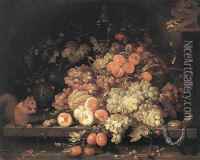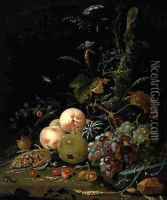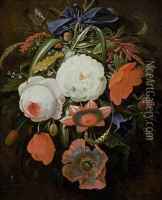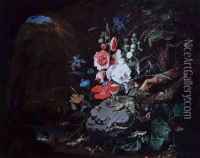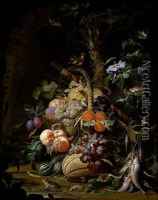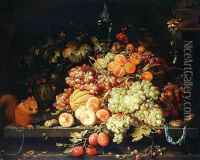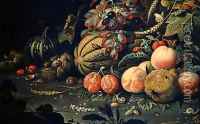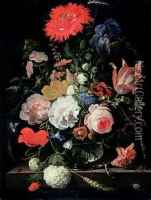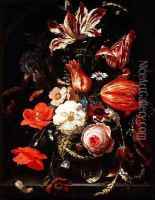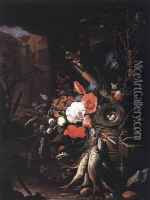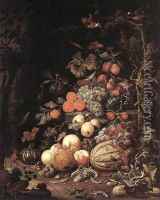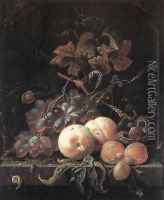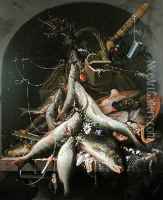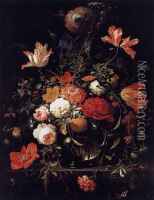Abraham Mignon Paintings
Abraham Mignon was a Dutch Golden Age painter who specialized in flower still lifes. Born in Frankfurt am Main in Germany in 1640, Mignon moved to the Netherlands as a child where he would develop and refine his artistic skills. He was apprenticed to Jacob Marrel, a still life painter who was also his stepfather. Marrel taught him the fundamentals of painting, and Mignon showed a particular talent for depicting flowers with accuracy and detail.
Mignon settled in Utrecht, where he became a member of the Guild of Saint Luke, an association for painters. His works were highly detailed and often included a variety of flowers in a single composition, showcasing his skill in rendering textures and colors. Mignon's paintings are characterized by their opulent and sometimes dramatic arrangements, with a focus on naturalism and the effects of light.
Despite his relatively short life, Mignon left behind a substantial body of work that was highly praised for its elegance and meticulousness. He was influenced by other Dutch still life painters of the time such as Jan Davidsz de Heem, whom he may have collaborated with during his career. Mignon's work was sought after by wealthy patrons and art collectors, and today his paintings can be found in many prestigious museums around the world.
Abraham Mignon passed away at the young age of 39 in Utrecht. His legacy lives on through his contribution to the Dutch Golden Age of painting, and he remains celebrated for his exceptional still lifes that capture the transient beauty of flowers with a timeless grace.
